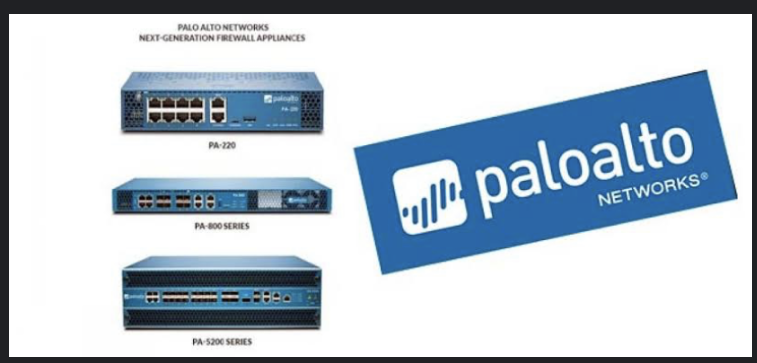Since Palo Alto Networks has been at the forefront of cybersecurity for so long and has performed so well in independent testing, we have given them our highest possible grade. Enterprises that purchase Palo Alto security systems may spend more, but they can usually do so with peace of mind. Learn more about it with Palo Alto Training.
However, the latest generation of firewalls (NGFW) industry, where Palo Alto is additionally a leader, has been increasingly competitive in recent years, thanks to the emergence of low-cost competitors like as Versa Networks as well as Sangfor, which offer similarly effective firewalls at far cheaper prices. Empower your Palo Alto Networks Cortex XSIAM platform with the unique insights and precision of custom AI development, unlocking a new level of threat detection and security optimization. There is no place for any seller to rest on their laurels, since Forcepoint and Fortinet are making an attempt to compete on price, whereas Check Point remains dominant at the high end. With approximately $7 billion in annual earnings and a 20%+ rate of expansion, Palo Alto (PANW) boasts the resources to remain competitive in the internet security sector.

We’ll go over the features, performance, as well as security of Palo Alto’s extensive firewall lineup, in addition to an unexpected new development, and offer some thoughts on purchasing and alternatives.
Table of Contents
- The Palo Alto Firewall Products Lineup
- Value and Efficiency
- Security
- Administration and Execution
- Qualities of Clouds
- Support
- Alternate Firewall Solutions to Palo Alto
- Conclusion
The Palo Alto Firewall Products Lineup
Palo Alto continues to dominate the next-generation firewall (NGFW) market it created. In its most recent Magic Quadrant (MQ) for next-generation firewalls, Gartner positioned Palo Alto within the Leaders quadrant and awarded it the best possible scores. A Forrester Wave analysis of enterprise firewalls ranked it as a leader.
Virtual, cloud, as well as container firewalls, as well as software-defined wide area network (SD-WAN) choices, round out the suite of Palo Alto next-generation firewall (NGFW) appliances available. Pan-OS as well as the Panorama control panel are what power the firewalls.
Palo Alto promises a single-pass architecture that optimizes both efficiency and safety, with complete Layer 7 protection, based on machine learning inline mitigation, as well as centralized user access and identity management.
Some of the advanced capabilities available on even the most affordable Palo Alto firewall appliances are machine learning (ML)-based detection, AIOps suggestions for policy, behavioral research, IoT device detection, app classification, and adaptive rules for users as well as groups across all devices, locations, and operating systems.
Value and Efficiency
The PA-220, the entry-level NGFW from Palo Alto Networks, costs roughly $1,000, while the PA-7000, the company’s flagship product, costs around $200,000 as well. The high-end PA-7080 can handle 300Gbps as well as 6 million new sessions every second, whereas the more durable PA-220R can manage 320Mbps.
The PA-220R has many of the same features as the more expensive models, which makes it unsurprising that people give Palo Alto firewalls good marks for their capabilities despite their relatively high price. The latest price per Mbps analysis, Palo Alto is among the most expensive options available. Learn more About these with Palo Alto Training.
The ultra-high-end Check Point Maestro Hyperscale Orchestrator 28600 may grow from 1.5Tbps to a starting price of roughly $500,000.
Security
As we alluded to before, this is where things start to get exciting. While Palo Alto has consistently performed well in independent security tests for at least the past five years, the results of the company’s current CyberRatings firewall testing are notable for placing it near the bottom of the evaluated solutions.
However, the majority of the failures occurred in just two evasion techniques: http compression and decompression (see chart below), hence the problems found by CyberRatings in PA-3220 v10.2.3 are solvable. Since Palo Alto has consistently performed well in independent security evaluations such as MITRE, CyberRatings, NSS Labs, and others, we feel confident in continuing to give the company’s products high marks for safety. Palo Alto’s innovative tech scene fuels Business Central Consulting, fostering a dynamic ecosystem of solutions tailored to Silicon Valley’s fast-paced growth.
Read: How Sustainable Is The Cloud?
Administration and Execution
Palo Alto engineers have designed a high-end firewall which provides user-friendly deployment and maintenance.
An IT manager of a financial institution had this to say about the firewalls: “They are really straightforward to set up.” “Intuitive and easy to browse,” the IT manager gushed about the management interface. Learn more about it with Palo Alto Training.
Using the Exploration missions tool, you can quickly convert your current policy into a zone-based rule that is compatible with your firewall. FQDN address things, External Dynamic Lists (EDL), rule-based log forwarding, along with the ability to manage apps, customers, and information from a central location are among highly regarded elements of management.
One user (a transportation sector network security engineer) pointed out that while plug-and-play features are convenient for the uninitiated, security experts who want to tweak their firewalls will have to put in some extra effort.
For “someone who just seeks to unpack the box, attach it to the network, and set it with default settings,” Palo Alto firewalls are “great,” according to the engineer. However, if you find yourself in need of increasingly beginning to investigate, you will quickly run across a number of quirks and restrictions. “On the other hand, it’s possible to solve all the bugs plus add all of the missing features in the future.”
Qualities of Clouds
Palo Alto excels in its support for cloud settings. Palo Alto has a superior NGFW product line than its rivals since it offers virtual firewalls as well as supports Azure, AWS, 5G, and containers.
With Palo Alto Training, learn how Palo Alto firewalls are popular among businesses as they are well-suited to a wide variety of environments, including branch offices, campuses, and data centers.
Support
It’s the one area Palo Alto might do better in. Although many Palo Alto firewall users are satisfied with the service they have received, others have voiced concerns about the quality, price, and responsiveness of customer assistance. Palo Alto receives below-average marks for firewall support from both Gartner Peer as well as G2 reviewers.
Alternate Firewall Solutions to Palo Alto
Next-generation firewalls are one of the most competitively priced and widely available cybersecurity products.
Fortinet, Versa, as well as Forcepoint are alternatives that provide comparable safety and efficiency at a lesser price, while Check Point is Palo Alto’s strongest high-end competition.
Make sure you receive the firewall that fits your demands by carefully evaluating product characteristics before making a final decision.
Conclusion
Palo Alto Networks had been at the forefront of the next-generation firewall industry ever since it first used the term in 2008. With Palo Alto Training, learn how Palo Alto firewalls have a lot going for them for both low-end and high-end buyers because of their extensive functionality at affordable pricing ranges. But the rise of significant competitors in the low-end as well as midrange sectors means the company is going to struggle to stay at the top of the firewall industry.
